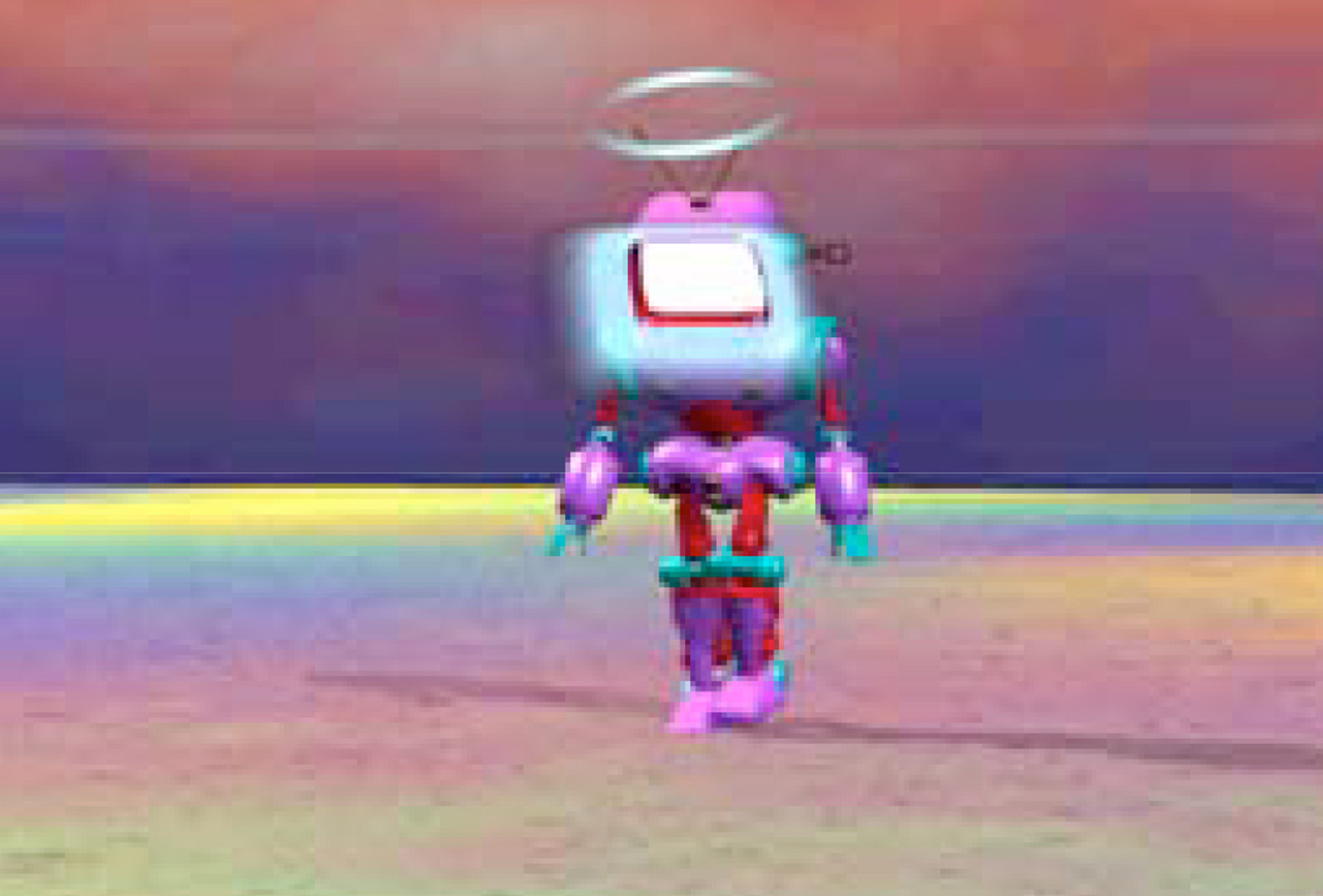“Fourier principles for emotion-based human figure animation” by Unuma, Anjyo and Takeuchi
Conference:
Type(s):
Title:
- Fourier principles for emotion-based human figure animation
Presenter(s)/Author(s):
Abstract:
This paper describes the method for modeling human figure locomotions with emotions. Fourier expansions of experimental data of actual human behaviors serve as a basis from which the method can interpolate or extrapolate the human locomotions. This means, for instance, that transition from a walk to a run is smoothly and realistically performed by the method. Moreover an individual’s character or mood, appearing during the human behaviors, is also extracted by the method. For example, the method gets “briskness” from the experimental data for a “normal” walk and a “brisk” walk. Then the “brisk” run is generated by the method, using another Fourier expansion of the measured data of running. The superposition of these human behaviors is shown as an efficient technique for generating rich variations of human locomotions. In addition, step-length, speed, and hip position during the locomotions are also modeled, and then interactively controlled to get a desired animation.
References:
1. Badler, N., Phillips C., and Webber, B.L. Simulating Humans. Oxford University Press 1993.
2. Boulic, R., Magnenat-Thalmann, N., and Thalmann, D. A Global Human Walking Model with Real-time Kinematic Personification. The Visual Computer. 6, 344-358, 1990.
3. Bruderlin, A. and Calvert, T.W. Goal-directed, Dynamic Animation of Human Walking. Proceedings of SIGGRAPH 89 (Boston, Massachusetts, July 31- August 4, 1989). In Computer Graphics, 23, 3 (July 1989), 233- 242.
4. Bruderlin, A., Teo, C.G. and Calvert, T.W. Procedural Movement for Articulated Figure Animation. Computers & Graphics. 18,453-461, 1994.
5. Cohen, M.F. Interactive Spacetime Control for Animation. Proceedings of SIGGRAPH 92 (Chicago, Illinois, July 26- 31, 1992). In Computer Graphics, 26, 2 (July 1992), 293-302.
6. Girard, M. and Maciejewski, A.A. Computational Modeling for Computer Generation of Legged Figures. Proceedings of SIGGRAPH 85 (San Francisco, California, July 23-27, 1985). In Computer Graphics, 19, 3 (July 1985), 263-270.
7. Koga, Y., Kondo, K., Kuffner, J. and Latombe, J-C. Planning Motions with Intentions. Proceedings of SIGGRAPH 94 (Orlando, Florida, July 24- 29, 1994). In Computer Graphics Proceedings, Annual Conference Series, 1994. ACM SIGGRAPH, pp. 395-408, 1994.
8. van de Panne, M. and Fiume, E. Sensor-Actuator Networks. Proceedings of SIGGRAPH 93 (Anaheim, California, August 1- 6, 1993). In Computer Graphics Proceedings, Annual Conference Series, 1993. ACM SIGGRAPH, pp. 335-342, 1993.
9. Sturman, D. Interactive Keyframe Animation of 3-D Articulated Models. Graphics Intelface ’86, Tutorial on Computer Animation, 1986.
10. Unuma, M., and Takeuchi, R. Generation of Human Motion with Emotion. Proceedings of Computer Animation ’91, pp. 77 – 88, 1991.
11. Wilhelms, J. Using Dynamic Analysis for Realistic Animation of Articulated Bodies. IEEE Computer Graphics and Applications 7, 12-27, 1987.





